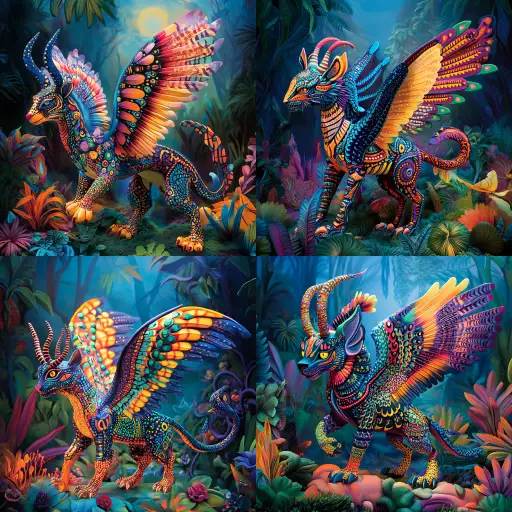Explore the Best AI Image Gallery

Beyond the Brush: AI Image Creation Tools and Their Impact on Creativity
The realm of artistic expression is undergoing a profound transformation, fueled by the emergence of sophisticated AI image creation tools. These powerful technologies, capable of generating stunning visuals from simple text prompts, are blurring the lines between human creativity and artificial intelligence. This new frontier presents both exhilarating opportunities and complex ethical challenges, prompting us to re-evaluate the very definition of art and its role in our society.
Unlocking Creative Potential
AI image generation tools empower individuals with diverse skill sets to unleash their creative visions. Aspiring artists can experiment with different styles and concepts without the need for extensive technical training. Designers can rapidly iterate on visual ideas, saving time and resources. Even non-artists can leverage these tools to bring their imaginative concepts to life.
- Conceptualization and Inspiration: AI can serve as a springboard for creative brainstorming, generating diverse visual concepts based on user inputs. This can spark new ideas and push the boundaries of artistic exploration.
- Rapid Prototyping: Designers can leverage AI to quickly generate variations of designs, allowing for faster iteration cycles and more efficient workflows.
- Accessibility and Inclusivity: Individuals with limited artistic skills or physical disabilities can use AI tools to express themselves creatively, breaking down barriers to entry in the art world.
Applications Across Industries
The impact of AI image creation extends far beyond traditional art forms. Its versatility finds applications in various industries:
- Advertising and Marketing: Generate eye-catching visuals for campaigns, personalize marketing materials, and create immersive brand experiences.
- Entertainment and Gaming: Design characters, environments, and assets for video games and films, enhancing visual storytelling and immersion.
- Education and Research: Visualize complex data sets, create interactive learning materials, and explore scientific concepts through compelling imagery.
- Architecture and Design: Develop innovative architectural designs, generate realistic renderings of structures, and visualize spatial layouts.
Navigating Ethical Considerations
As with any powerful technology, AI image creation raises ethical concerns that require careful consideration:
- Copyright and Ownership: Questions arise regarding the ownership rights of AI-generated artwork. Who holds the copyright – the creator of the AI, the user who provides the prompt, or the AI itself?
- Bias and Representation: AI models are trained on vast datasets, which may contain biases that perpetuate existing societal stereotypes. It is crucial to ensure fairness and inclusivity in the training data to avoid reinforcing harmful representations.
- Misinformation and Deepfakes: The ability to create realistic synthetic images raises concerns about the potential for misuse, such as creating convincing fake news or manipulating public opinion.
- Transparency and Accountability: It is important to understand how AI models generate images and ensure that the decision-making processes are transparent and accountable.
Future Trends and Innovations
The field of AI image creation is rapidly evolving, with ongoing research pushing the boundaries of what is possible. Here are some future trends to watch:
- Enhanced Realism and Detail: AI models will continue to improve in their ability to generate hyper-realistic images, blurring the line between the real and the synthetic.
- Multimodal Generation: AI will be capable of generating images from various input modalities, such as text, audio, and video, creating richer and more interactive experiences.
- Personalized Creativity: AI tools will become increasingly personalized, tailoring image generation to individual preferences and artistic styles.
- Collaboration Between Humans and AI: The future of creative expression likely lies in a collaborative partnership between humans and AI, leveraging the strengths of both.
Embracing the Transformative Power
AI image creation tools have the potential to revolutionize the creative landscape, empowering individuals, fostering innovation, and expanding the boundaries of artistic expression. However, it is essential to approach this technology with a critical eye, addressing ethical concerns and ensuring its responsible development and deployment. By navigating these challenges thoughtfully, we can harness the transformative power of AI to unlock new possibilities for creativity and innovation.